In some states, generations of hunters have been limited to shotguns and muzzleloaders for filling their deer tags and chest freezers.
In these states, legislators and wildlife commissions decided long ago that scatterguns and black powder rifles were the only safe ways to harvest whitetails, especially in densely populated areas.
But the times, they are a-changin’. Some states are loosening restrictions and allowing hunters to use straight-walled rifle cartridges to harvest whitetails.
Here’s what you need to know if you’re considering swapping your slug gun for a rifle chambered for a straight-walled cartridge.
WHY YOU SHOULD TRUST US
Alice is a lifelong hunter and experienced shooter who grew up flinging arrows and bullets at Virginia whitetails, turkeys, and game birds. Her most recent favorite hunting experience, though, is chasing bull elk in the Colorado backcountry.
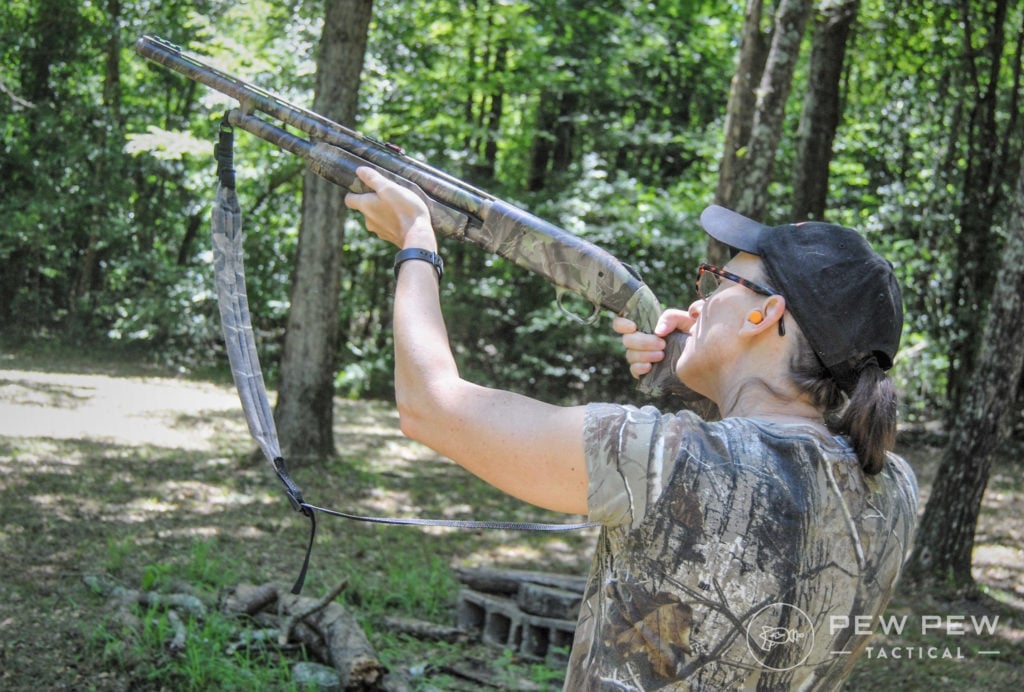
She leverages this knowledge to bring her readers tips, tricks, and recommendations on what works (and doesn’t) in the field.
What is a Straight Walled Cartridge?
At one time, cartridges were straight and boxy. They lacked the sexy curved shoulders and slender bottlenecks common on most modern cartridges.
We didn’t see cartridge cases shaped like the .30-30 Winchester or .30-06 Springfield until near the beginning of the 20th century. Before that, straight-walled cartridges like the .45-70 Government and .44-40 Winchester (both introduced in 1873) were the norm.
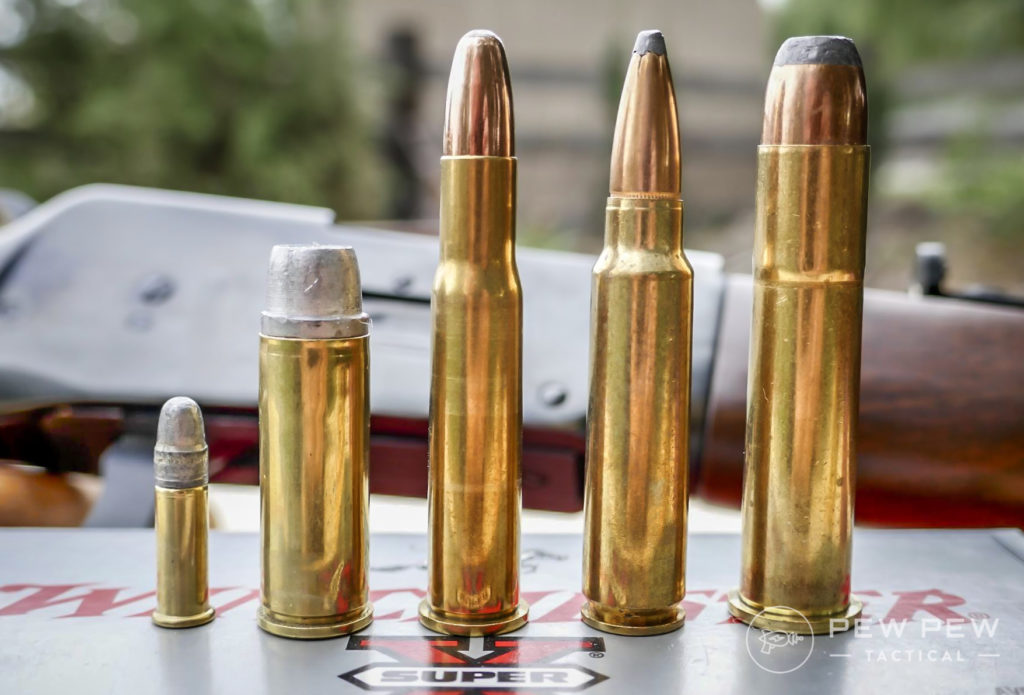
Early cartridges were limited to straight wall cases, not so much because no one thought to neck them down. It had much more to do with the limited metallurgy of the time.
The brass alloys of the mid to late 1800s were difficult to draw out. Smooth-sided, straight-walled cases were just easier to make.
As the 19th century drew to a close, technological advancements in both metal engineering and ballistics allowed the gradual transition from straight walls to the oblique shoulders and slender necks, we’ve grown to know and love.

But why the transition to shoulders and necks? While the actual answer is complex enough to fill an entire book, the basic answer is to increase speed, power, and range.
The bottlenecked design creates higher pressures than those generated in a straight-walled case, which results in a bullet that flies both faster and further.
Best Straight Wall Cartridges
1. .45-70 Government
The .45-70 Government is the reigning king of the brush guns. Capable of cutting through thick woods without major bullet deflection, .45-70 is a heavy hitter suitable for deer, elk, bear, and moose at close to medium ranges.
In its prime, .45-70 even saw some action hunting big bison.
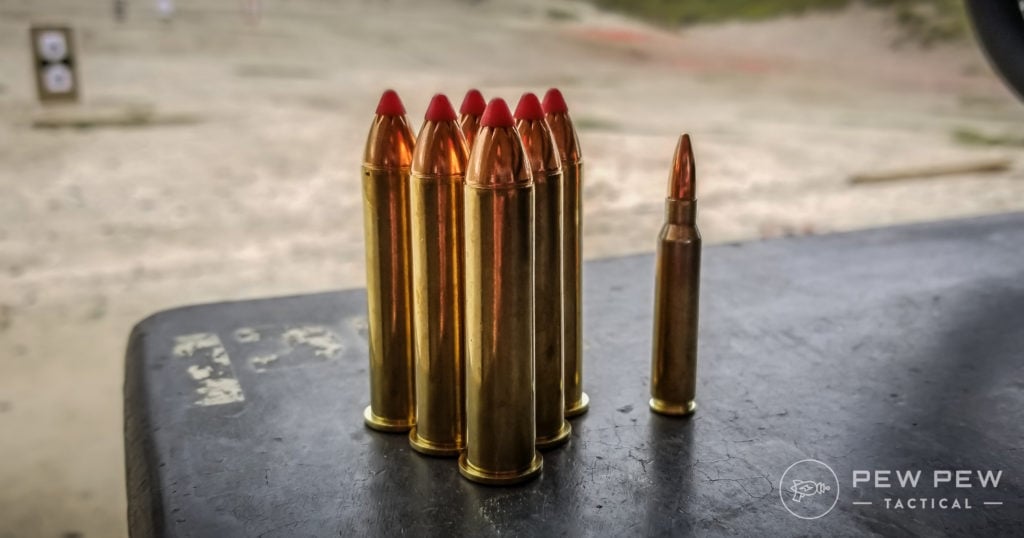
With a heavy bullet loping along at a modest velocity, this cartridge drops whitetails without damaging tons of meat. If filling a freezer with steaks is your main goal, the .45-70 Government is the perfect tool for the job.
First released in 1873 for the “Springfield Trapdoor” rifle, the .45-70 Government was one of the first successful self-contained metallic rifle cartridges. To work with the relatively inefficient black powder of the time, the .45-70 has some serious case capacity.
Despite the amount of propellant its cavernous case could hold, the cartridge still produced a slow velocity. To compensate, designers loaded it with a huge .45 caliber bullet.
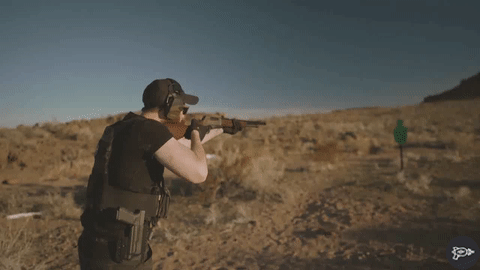
Unfortunately, there aren’t a ton of manufacturers pumping out modern rifles chambered in .45-70 Government.
Even modern factory loads need to function safely in older rifles that weren’t built to withstand high pressures created by a well-packed case of modern powder. That means the .45-70 Government rarely reaches its full potential.
However, when paired with a strong modern rifle, like the Henry, .45-70 cartridges can be hand loaded to specs that produce some pretty exciting results.
2. .444 Marlin
The .444 Marlin was born more than 90 years after the .45-70. Designed for the Marlin lever-action rifle, the .444 is basically a stretched-out .44 Magnum cartridge.
In its heyday, the .444 Marlin was the most powerful lever-action cartridge around. However, with the rise of bolt-action rifles, the .444 faded into the background and was nearly forgotten.

The cartridge is experiencing a major resurgence since the implementation of new straight-walled cartridge laws in many states. And thanks to advancements in both propellant and bullet designs, it’s back better than ever.
Anyone familiar with the .444 Marlin is surely surprised it doesn’t rank higher in popularity. This one offers some of the best deer hunting performance in the realm of straight-walled cartridges.
It even retains respectable energy and velocity out past 200 yards, which is well within the typical shot range for most whitetail deer.
Pair a reliable old lever action with a modern load like Hornady’s LEVERevolution, and you’ll be a force to be reckoned with in the deer woods.
3. .44 Magnum
Although the .44 Magnum is most often associated with big bore revolvers (“Go Ahead. Make my day!”), there are also plenty of carbines and rifles chambered for this cartridge.
There are also plenty of affordable factory loads available, and it offers accuracy far more consistent than even the best shotgun slugs.

You shouldn’t be surprised that Marlin has some fine lever guns chambered for Dirty Harry’s favorite cartridge.
It’s also relatively easy to get your hands on decent, affordable factory loads, at least when there isn’t a frustrating ammo shortage.
4. .38-55 Winchester
Like most of our favorite straight wall cartridges, the .38-55 Winchester was first used in cowboy-style lever actions and single-shot target rifles.
Introduced in 1876, the .38-55 was originally a black powder load. In fact, the cartridge is named for the .38 caliber slug and the 55 grains of black powder it originally contained.

Winchester released an updated version of the cartridge in 1978. The modernized version featured smokeless powder, making it capable of propelling relatively hefty 250-grain bullets downrange with decent accuracy.
Unfortunately, getting your hands on a rifle chambered in .38-55 Winchester isn’t exactly easy these days. They definitely aren’t rolling off modern assembly lines in large numbers.
However, if you’re lucky enough to have inherited your great-granddaddy’s .38-55 deer rifle, you’re in for a treat.
If you can find some hunting rounds to load it (rather than the more common cowboy action loads), this is not only a capable whitetail round but also a soft shooter.
Its relatively light recoil is like a breath of fresh air in the world of hard-hitting deer hunting cartridges.
5. .450 Bushmaster
Not all straight-walled cartridges are vintage relics of the past. The .450 Bushmaster made its debut just a few short years ago, in 2016.
Developed by Tim LeGendre of LeMag Firearms (and licensed to Bushmaster), the .450 Bushmaster was built to fill the need for a big bore cartridge that could run reliably in a semi-automatic.

The cartridge was made for the AR-15 platform and is more than capable of delivering one-shot kills out to 250 yards when held in capable hands.
Just be prepared to sacrifice some venison. This one hits hard, leaves a huge exit wound, and does some serious soft tissue damage on its way through.
The .450 Bushmaster is also a popular hog cartridge. It pushes big, heavy bullets at some pretty respectable velocities and does some major damage on the huge boars that often grace the covers of popular outdoor magazines.
6. .350 Legend
The .350 Legend is the real new kid on the straight-walled block. Winchester unveiled this design at the 2019 SHOT Show.
The cartridge was developed with straight-walled hunting regulations in mind. Since (at the time of this writing) the cartridge has only been available for a handful of hunting seasons, there isn’t a lot of first-hand info on how this one performs on real live deer.
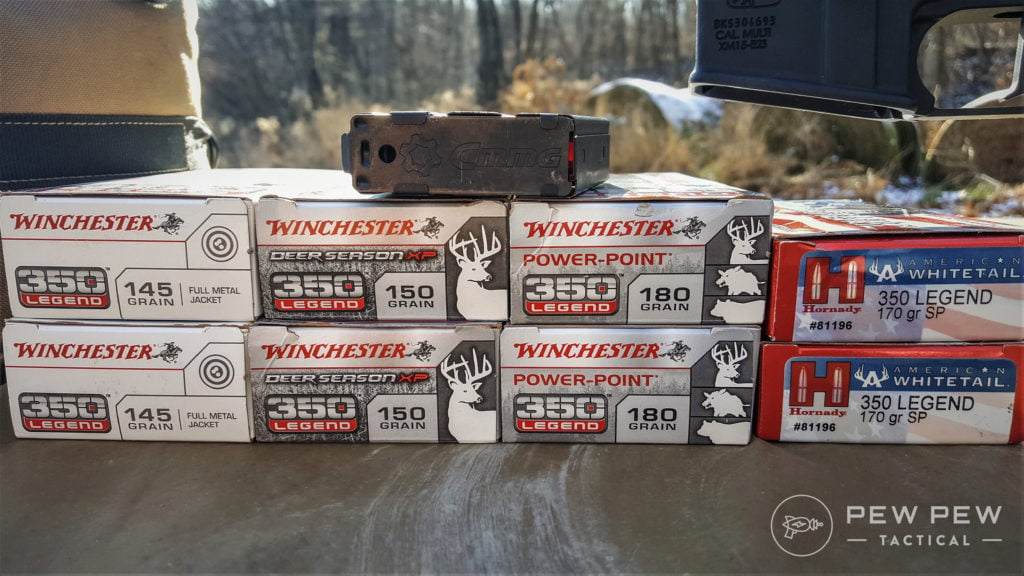
However, the numbers look good. It produces approximately 20 percent less felt recoil than the popular .243 yet delivers 20 percent more penetration. It also delivers more terminal energy than the venerable .30-30 (although the trajectory isn’t nearly as flat).
Not only does the .350 Legend promise to compete with traditional deer hunting cartridges, but it also ballistically outperforms the popular .300 Blackout.
Plus, like the .300 BLK, .350 Legend is AR-15 compatible and subsonic-capable.
.50 Beowulf
Another relative newcomer to the straight-walled scene is the gargantuan .50 Beowulf.
Developed by Bill Alexander of Alexander Arms, this is the largest round you can put through an AR-15 (at least without major internal modifications).
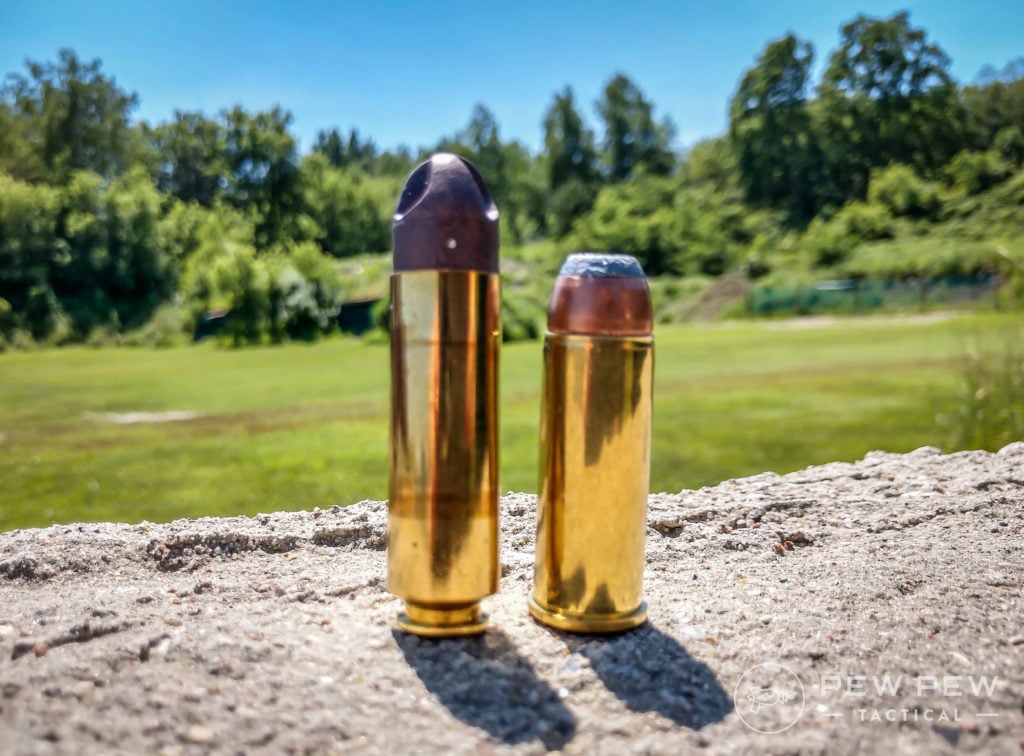
This monster of a cartridge was intended for tactical applications, and it can bust through engine blocks and automotive glass like there’s no tomorrow.
It is also gaining some much-deserved recognition as a sporting cartridge. The .50 Beowulf is capable of humanely harvesting every big game animal that roams the North American continent.
This one fires a massive projectile, and many hunters consider it overkill for hunting whitetail deer.
Straight-Walled Cartridge Regulations by State
Here is a quick run-down of some state SWC regulations. Since the rules often change, be sure you are familiar with all state and local hunting regulations before you hit the woods.
Iowa
Straight-walled cartridges can only be used to hunt deer during the special youth and disabled hunting seasons, as well as the first and second shotgun seasons.
The case length cannot exceed 1.8 inches. The following cartridges are considered legal straight wall rifle cartridges in the state of Iowa: .375 Winchester, .444 Marlin, and .45-70 Government.
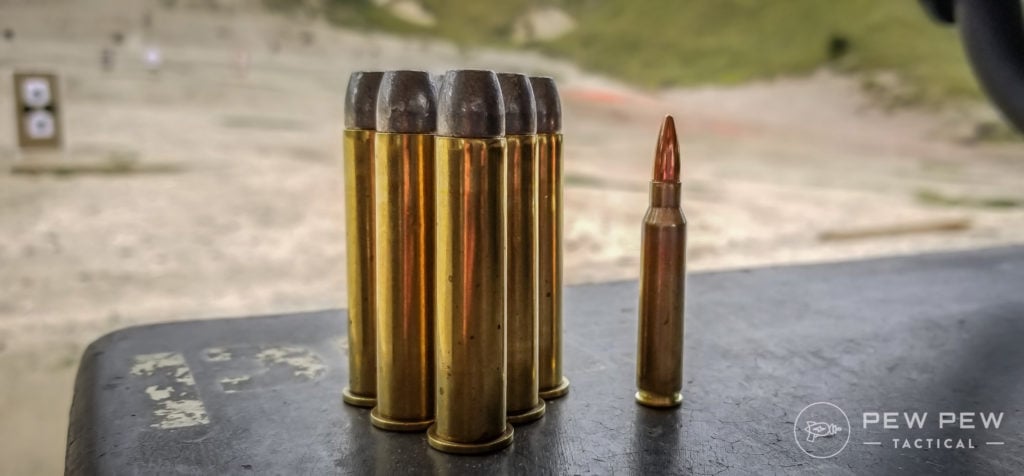
Study up on Iowa’s cartridge regulations here.
Michigan
In Michigan’s “Limited Firearms Zone” (formerly known as the “Shotgun Zone”), deer hunters can use rifles chambered for SWCs .35 caliber or larger.
Cartridges must have a case length between 1.16 inches and 1.80 inches.

For more information on Michigan’s straight-walled cartridge regulations, go here.
Ohio
Ohio deer hunters can now use SWCs with projectiles measuring from .357 to .50 inches in diameter. Hunters cannot carry firearms loaded with more than three cartridges.
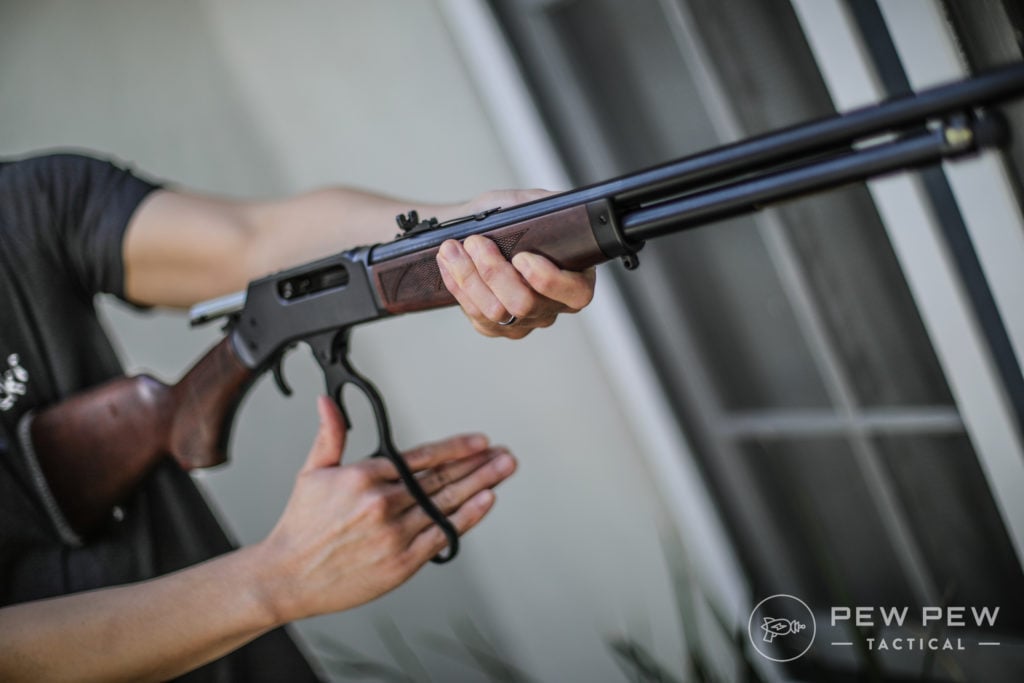
For up-to-date information on Ohio’s hunting regulations, including cartridge restrictions, visit the Ohio Department of Natural Resources website.
Straight-Wall Cartridge Revival
When the new bottleneck cartridges entered the shooting scene, they quickly gained popularity.
Not only did these buxom cartridges look cool, but they also offered faster velocities, flatter trajectories, and more reliable accuracy. The straight-walled cartridges of the cowboy era quickly fell out of favor.
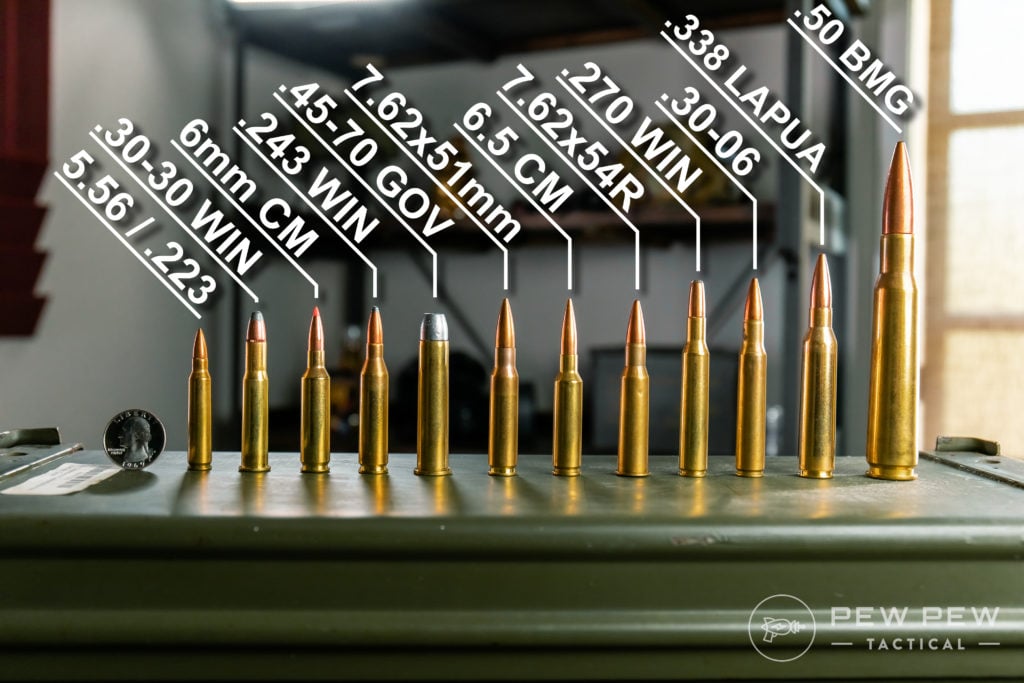
Although straight-walled cartridges have been basically obsolete for the better part of a century, they are seeing a huge resurgence, mostly thanks to modern deer hunters.
States like Michigan, Ohio, and Iowa now allow rifles chambered in straight-walled centerfire cartridges during hunting seasons that previously only allowed muzzleloaders and shotguns.
As a result, the straight wall cartridge (SWC) is quickly returning to fashion.
Why Switch to a Straight Wall Cartridge?
Peter Novotny, an Ohio Division of Wildlife district manager, claims, “Straight-walled cartridges are comparable to muzzleloaders and slug guns.”
That’s the whole reason some states are loosening hunting restrictions to include SWCs. However, Novotny’s claim is only partially true.
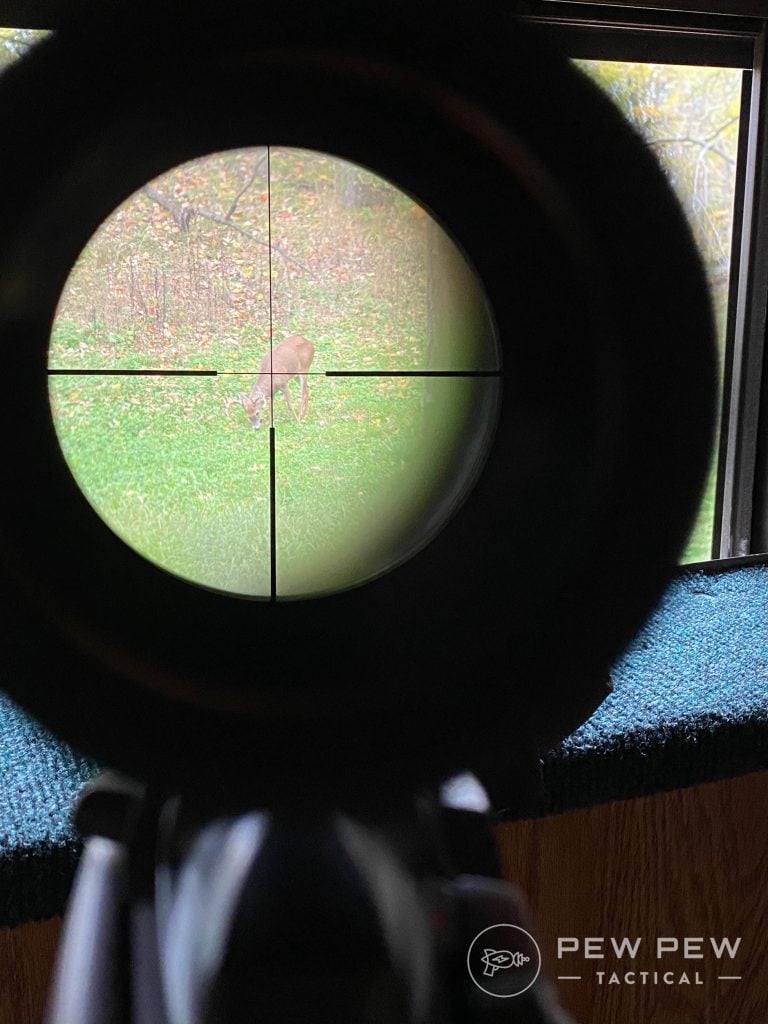
Sure, SWCs aren’t capable of achieving the speed or distance bottleneck cartridges pull off. While their popularity is indeed growing, SWCs will never replace bottleneck ammo.
However, these stocky cartridges do have their place in the hunting market.
Any SWC (that is legal for deer hunting) is going to give you better accuracy and further reach than anything you could shoot through a smoothbore shotgun.
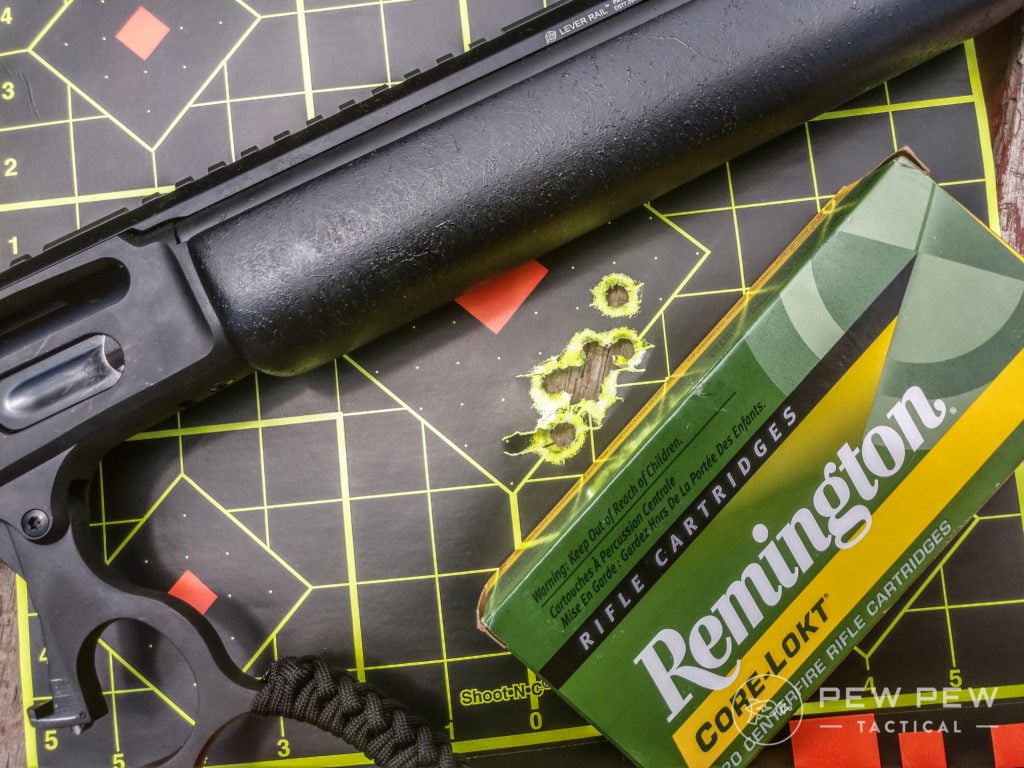
Across the board, SWCs are hard hitters with relatively mild recoil. They are effective on big game out to at least 200 yards, and most can pull double duty, giving you a capable deer rifle that also works on larger game like elk and moose.
(You’ll just have to work on your stalking skills. These cartridges require you to get up close to those heavy animals to pull off an ethical shot.)
If you’re considering making the switch to straight-walled cartridges, here is a list of the most popular options for deer hunting.
Final Thoughts
If you plan to hunt in one of the many states that now permit straight wall cartridges for deer hunting, you may want to pick up a new rifle. While there is likely to be hot debate around campfires and tailgates about which SWC is “best” for deer hunting, they all have their own strengths and weaknesses.
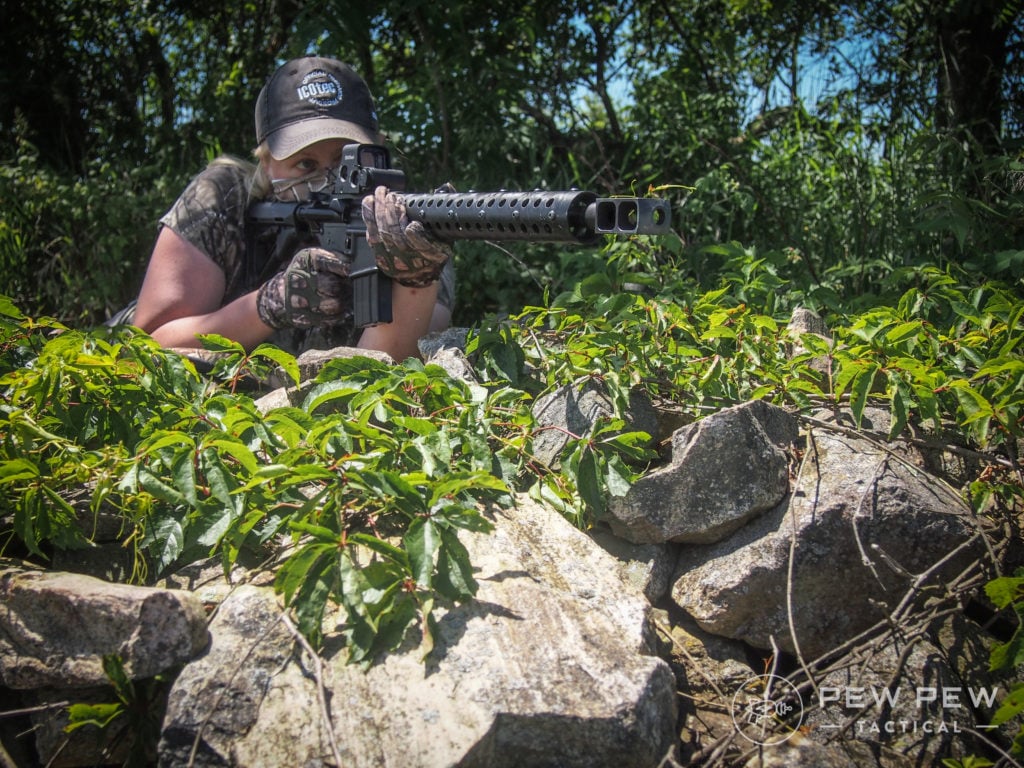
The .350 Legend and .450 Bushmaster allow you to run SWCs through a semi-auto AR-style rifle, which definitely has advantages (as well as some serious cool factor).
If you want an excuse to tote an iconic cowboy lever-action into the deer woods, choose one of the old classics like .45-70 Government or .38-55 Winchester. (By the way, old lever actions are their own brand of cool.)
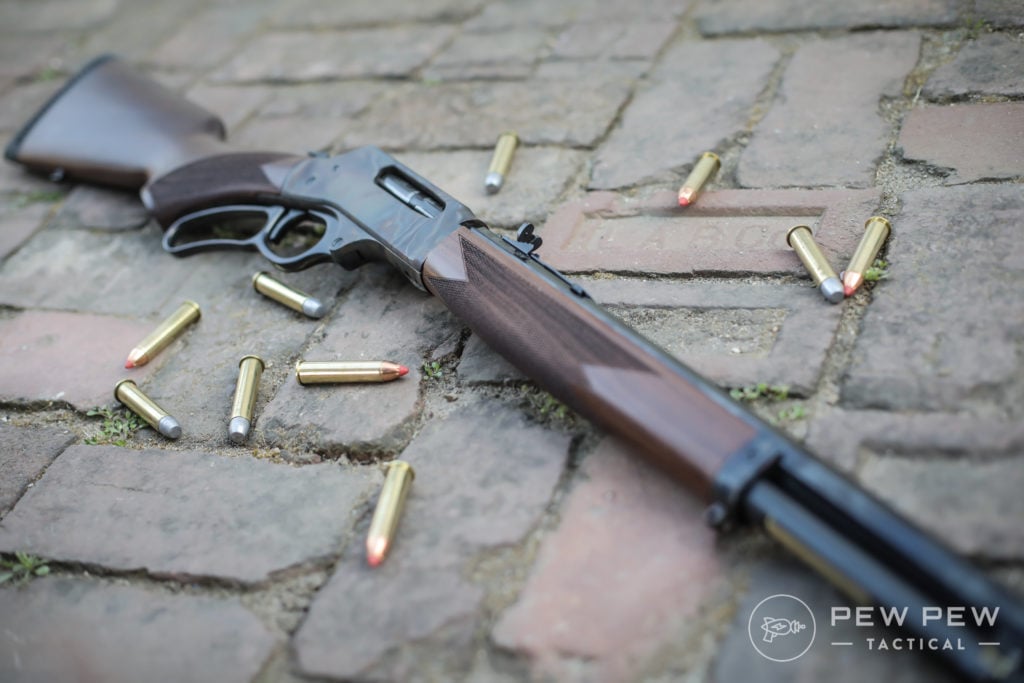
The truth of the matter is it really doesn’t matter which SWC you choose. They are all awesome deer cartridges, and as long as you can shoot, they will help you fill your freezer this Fall.
Be sure to share both your happy feelings and frustrations about straight-walled cartridges in the comments below. New to deer hunting? Check out our Introduction to Deer Hunting for tips and gear recommendations.











































